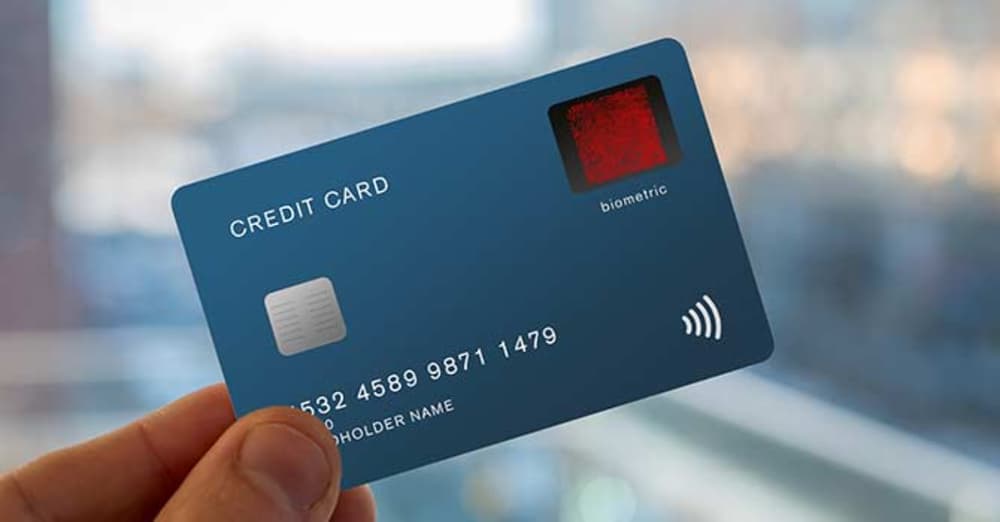Biometric payment cards combine fingerprint recognition with contactless payment technology to offer enhanced security and convenience. By verifying transactions through unique biometric data stored securely on the card, these cards reduce fraud risk and eliminate the need for PINs.
Biometric Payment Cards: The Future of Contactless with Fingerprint Security
Written by Sumit Kaushik

With the unfolding pace of financial development in the present day, biometric payment cards are set to be the game-changer. With the ease of contactless payment married with the additional security of fingerprint verification, smart cards have the potential to revolutionize the manner in which consumers do business in the new digital world. No more entry of PINs and passwords—your fingerprint will unlock secure and hassle-free payments.
What Are Biometric Payment Cards?
Biometric payment cards are credit or debit cards with built-in fingerprint readers. When payment is entered, the owner authenticates themselves by merely putting their finger on the reader. This biometric information is compared to the encrypted fingerprint on the card that has been stored safely, verifying the identity of the cardholder in real-time and enabling the transaction to go through.
Why Biometric Payment Cards Are a Security Revolution
- Improved Fraud Protection: In contrast to conventional PIN- or signature-based cards—promptly stolen, guessed, or duplicated—biometric cards are based on irreplaceable physiological characteristics that are nearly impossible to counterfeit. This makes abuse vastly more difficult.
- Eliminating the PIN Requirement: PIN typing or memorization is no longer necessary for users, not only enhancing usability but also curtailing PIN theft through shoulder surfing or skimming devices.
- Seamless Contactless Payments with an Additional Boost of Security: Contactless cards are fast but lose out on security in that they permit small-value transactions without verification. Biometric cards are fast with each and every transaction being verified with the cardholder's fingerprint.
How Biometric Payment Cards Work
Biometric cards have an internal battery-powered fingerprint scanner embedded within it. To complete the purchase, the cardholder just places his finger on the sensor. The secure chip inside the card checks the fingerprint locally—that is, biometric information never exit the card—then, upon successful authentication, the card completes the purchase through NFC or chip-and-PIN technology.
Benefits Over Security
- User convenience: quicker checkout without entering PIN or signature.
- Privacy Protection: Biometric data is stored within the card itself, rather than in the cloud, preserving user privacy.
- Decreased Chargebacks: Cardholder verification reduces fraud-driven disputes to banks' and merchants' advantage.
Challenges and Adoption Barriers
- Cost and Production Sophistication: Manufacturing biometric cards is more costly compared to standard cards due to embedded batteries and sensors, which can serve as a deterrent to mass adoption.
- Battery Life and Endurance: High battery life and card endurance in normal use is a technological challenge that requires resolution.
- Consumer Awareness: Educating the users in biometric security and privacy helps to build trust and acceptance.
The Future of Biometric Payment Cards
With decreasing costs and enhanced reliability, biometric technologies are being tested increasingly by financial organizations worldwide in the guise of biometric payment cards for enhanced security and enhanced user experience. In an environment of increasing anxiety about fraud and cyber robbery, fingerprint-based cards present a desirable compromise between security and convenience.
Conclusion
Biometric payment cards are a leap forward from more secure, contactless payment technology. Based on fingerprint recognition technology combined with the installed base of existing standard payment cards, they represent a cost-effective combination of convenience and added security.
The hybrid capability allows consumers to experience the convenience and speed of contactless payments without sacrifice in fraud protection. Unlike traditional cards relying on intercepted or relayed PINs or signatures, biometric cards authenticate the user by individual physiological characteristics, rendering unauthorized access significantly less likely.
As biometric sensor technology continues to miniaturize, stabilize, and become more affordable, and as customers increasingly recognize the risk of digital security threats, biometric payment card adoption will increase phenomenally rapidly. Banks, merchants, and consumers all benefit from fewer fraud attempts, fewer chargebacks, and simplified payment processing.
Biometric payment cards could be the new norm for daily payments across the globe within two years' time. With cutting-edge biometric security and contactless ease, they will transform cash payment making and usher in a future that is not only faster and more convenient but also more secure and safer. It is a noteworthy step on the journey to a simpler safer system that meets the demands of the digital age.